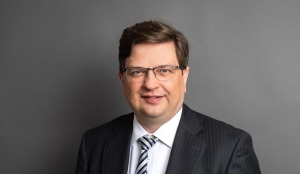FTTH/FTTB: What is the current situation on Financing the roll-out of fibre optic networks in Germany?
Relevance of fibre optic roll-out in Germany
In order to remain competitive, Germany needs a future-proof technology such as glass fibre, but the nationwide roll-out of fibre optic networks continues to be one of the major challenges for network operators in Germany. Accelerated by the impacts of the Covid-19 pandemic and the ongoing trend towards the digital networking of devices and systems via the internet (Internet of Things), the demand for high-performance internet connections is constantly growing. This applies equally to private and business needs. Private connections are in high demand as a result of remote working and the use of high-resolution streaming channels. At the same time, due to Industry 4.0 or automation, the industry is also dependent on a high-performance data infrastructure.
Comprehensive coverage with high-performance networks is a fundamental prerequisite for the successful digital transformation of the economy and society. Despite this, Germany still ranks among the lowest in international rankings when it comes to the nationwide roll-out of fibre optic networks.
Currently with its gigabit strategy (Gigabitstrategie), the German government is aiming to achieve nationwide coverage with fibre optic connections by 2030.
Investment in infrastructure projects
With regard to the implementation of this objective, the gigabit strategy (Gigabitstrategie) anticipates that the roll-out will be realised through a combination of private and subsidised roll-outs. However, private-sector roll-outs shall prevail over state funding. The main contribution to fibre optic roll-out will thus be made by private companies.
Financing the roll-out of network infrastructure is generally a capital-intensive process, which means that financing is always associated with risks and only pays off under certain conditions. At the same time, the financing of fibre optic roll-outs as an infrastructure project is attractive for investors, as such investments can be expected to generate comparatively stable and highly predictable cash flows over a long-term period, from which the debt service can be reliably serviced.
Securing the cash flow over the project term is thereby of particular importance. In the case of investments in the roll-out of passive network infrastructure (dark fibre) in particular, reliable cash inflows can be generated by leasing the network to an active network operator as part of long-term leasing arrangements. But even when financing active network infrastructure, investment risks such as the take-up risk can be limited with focused pre-marketing in the target areas. For any investor, whether equity or debt capital or even mezzanine investors, the protection of the capital invested through a wisely chosen structure for project development in the future is crucial.
The basis for successful project financing is a sensible risk profile based on the feasibility of the project, taking market risks into account. In addition to the legal and technical due diligence and the provision of the project company's assets (share pledge, account pledge, security assignment and security transfer, but also direct agreements with project parties if necessary) as collateral, a project plan covering the course of the project with verifiable milestones to monitor the progress of the project and model calculations of the financing structure are essential.
Possible market trends: wholesale and open access models
The amendment to the German Telecommunications Act (TKG) to implement EU Directive 2018/1972 is intended to establish a regulatory framework that specifically incentivises investment and promotes the market-driven roll-out of network infrastructure.
This includes wholesale and open access models. Wholesale constellations are characterised by the fact that they separate the stages of the value added chain. They are characterised by the fact that the operation of the network infrastructure is separated from the end customer service. Open access models, on the other hand, are intended to incentivise the joint roll-out and liberalisation of networks. This aims to make infrastructure competition superfluous and avoid unnecessarily high investment costs and overbuilding. It remains to be seen to what extent such models can become established on the market.
We are currently seeing a move away from investment planning that primarily aims to rapidly expand the network infrastructure with as many homes passed as possible towards more cash flow-oriented planning with a high take-up rate, i.e. many homes activated. The exciting question that arises in this context is whether this will lead to a wave of consolidation at asset level or whether many more aggregators are needed that can make an interesting offer to the wholesale market by bundling smaller roll-out projects with passive infrastructure, so that larger service providers are also interested in marketing connections in smaller networks and thus increasing the take-up rate there too. In any case, a network owner must always weigh the opportunities and risks of opening its network to wholesale. In particular, exit provisions in the agreements require increased attention, including from lenders and financiers.
Our expertise
Our team regularly advises banks and investors as well as project developers comprehensively on infrastructure projects and has many years of experience, particularly in FTTH/FTTB projects. Please contact us and benefit from our expertise in the field of telecoms financing.
With the kind support of Apostolos Mitsios (research assistant) and Silan Loennecker (student assistant).




